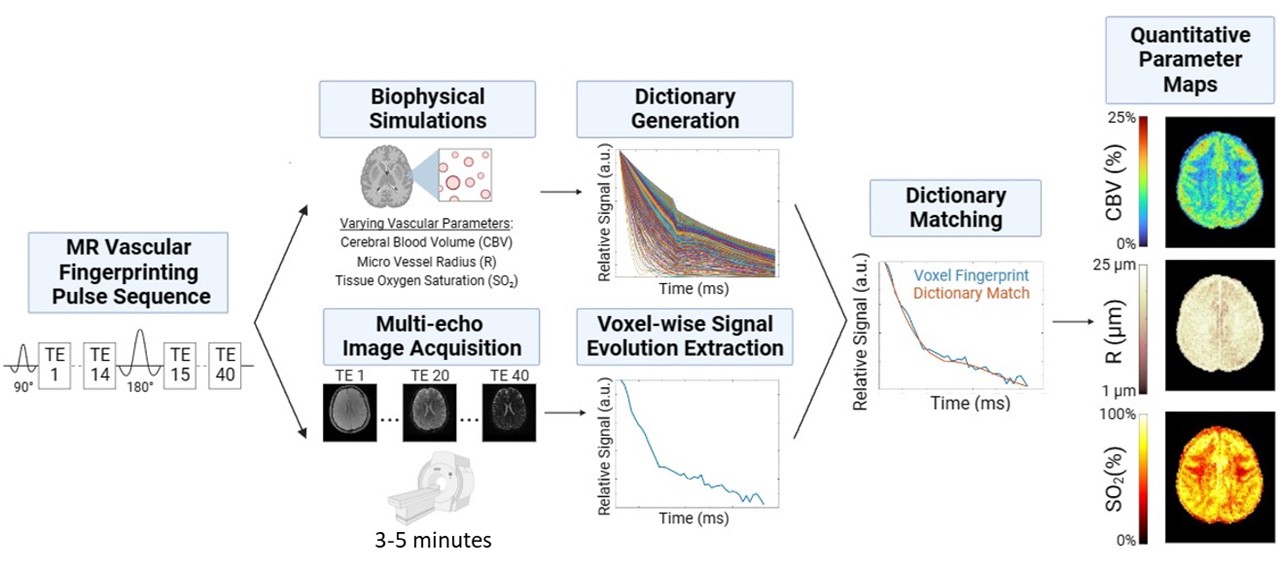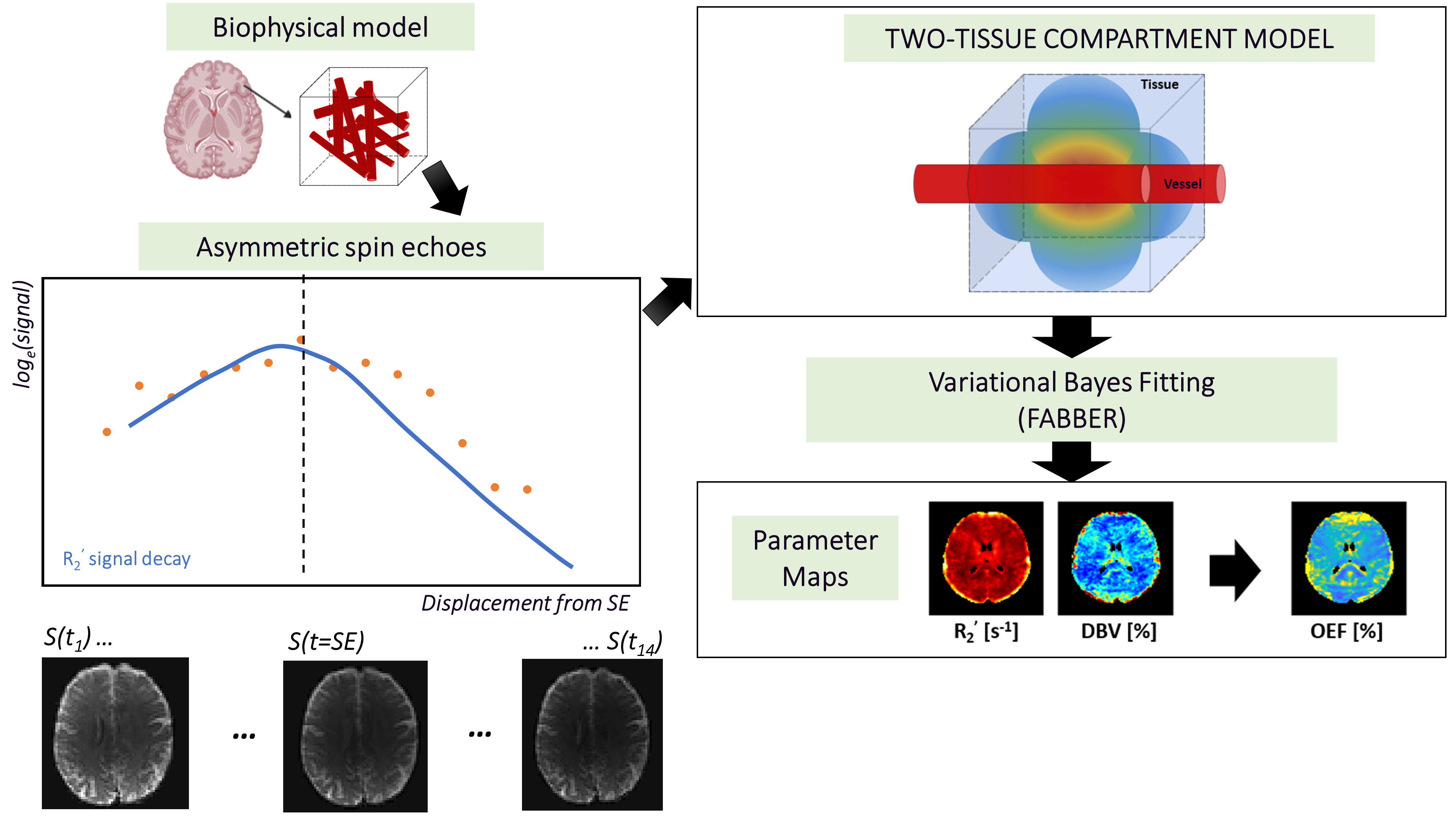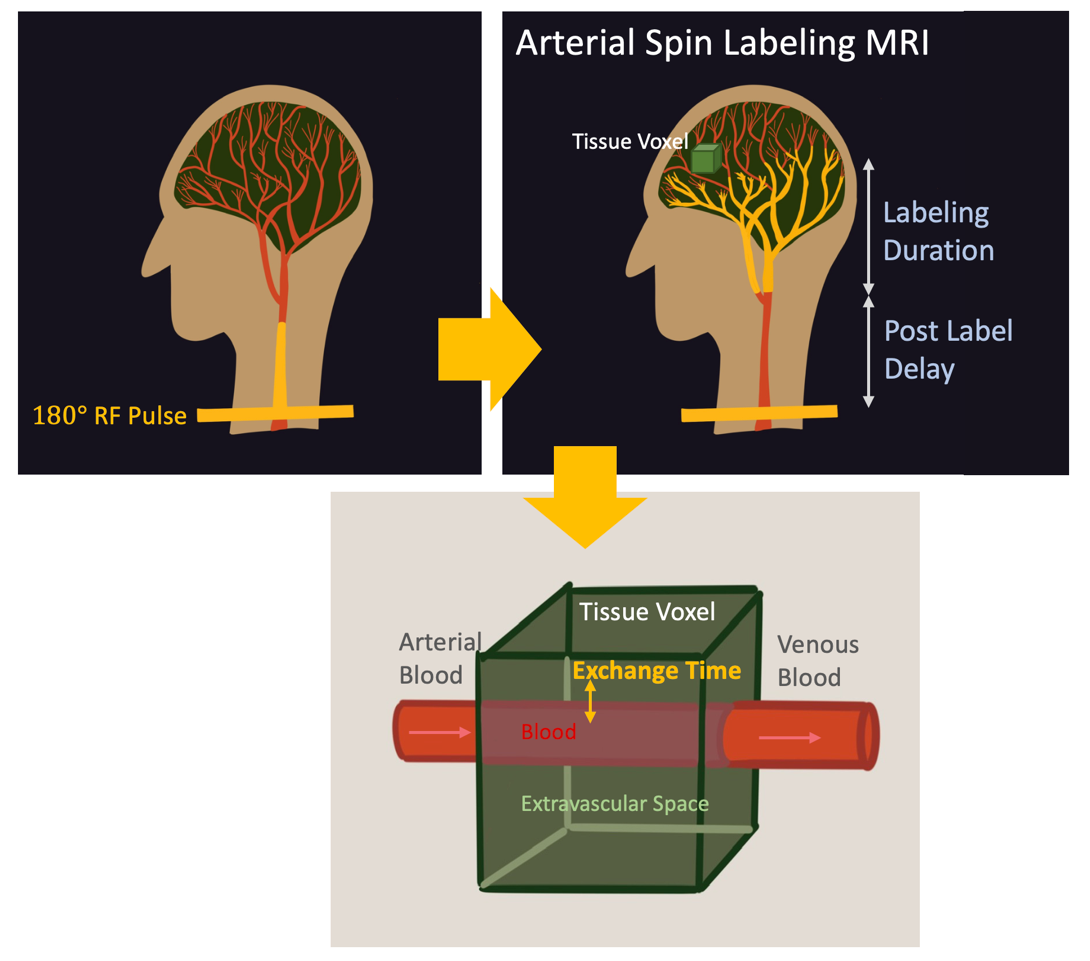Quantitative Cerebrovascular MRI
Magnetic resonance fingerprinting represents a novel way in which MR image acquisition and reconstruction can be used to produce multiparametric data from a single scan. By running biophysical numerical simulations in parallel to image acquisition, we can match the MRI measurement to a simulated curve ("fingerprint"), and therefore extract the underlying parameters. MR vascular fingerprinting leverages this framework to produce maps of cerebral blood volume (CBV), microvascular vessel radius (R), and tissue oxygen saturation (SO2).

We are also accelerating the vascular fingerprinting MRI scans to enable new dynamic investigations into how the brain responds to a vascular "stress test" and how this changes in cerebrovascular disease.
Quantitative BOLD, a non-invasive approach to assess brain oxygenation, to predict cognitive impairment related to vascular injury. This technique will enable reliable quantification of oxygen extraction fraction (OEF) and other hemodynamic parameters as early biomarkers of cognitive decline.

Blood-brain barrier (BBB) water transfer rate: We are optimizing two methods to assess blood-brain barrier (BBB) water transfer rate in neurological and neuropsychiatric disorders. These methods are based on two MRI sequences, the diffusion-weighted (DW) and multi-echo time (TE) arterial spin labeling (ASL), to estimate the voxelwise water exchange time across the BBB as a proxy for its integrity. BBB breakdown has been shown to occur with aging, schizophrenia, and Alzheimer’s Disease. The overall purpose of this project is to develop a clinically useful, novel biomarker to diagnose and manage disease.

